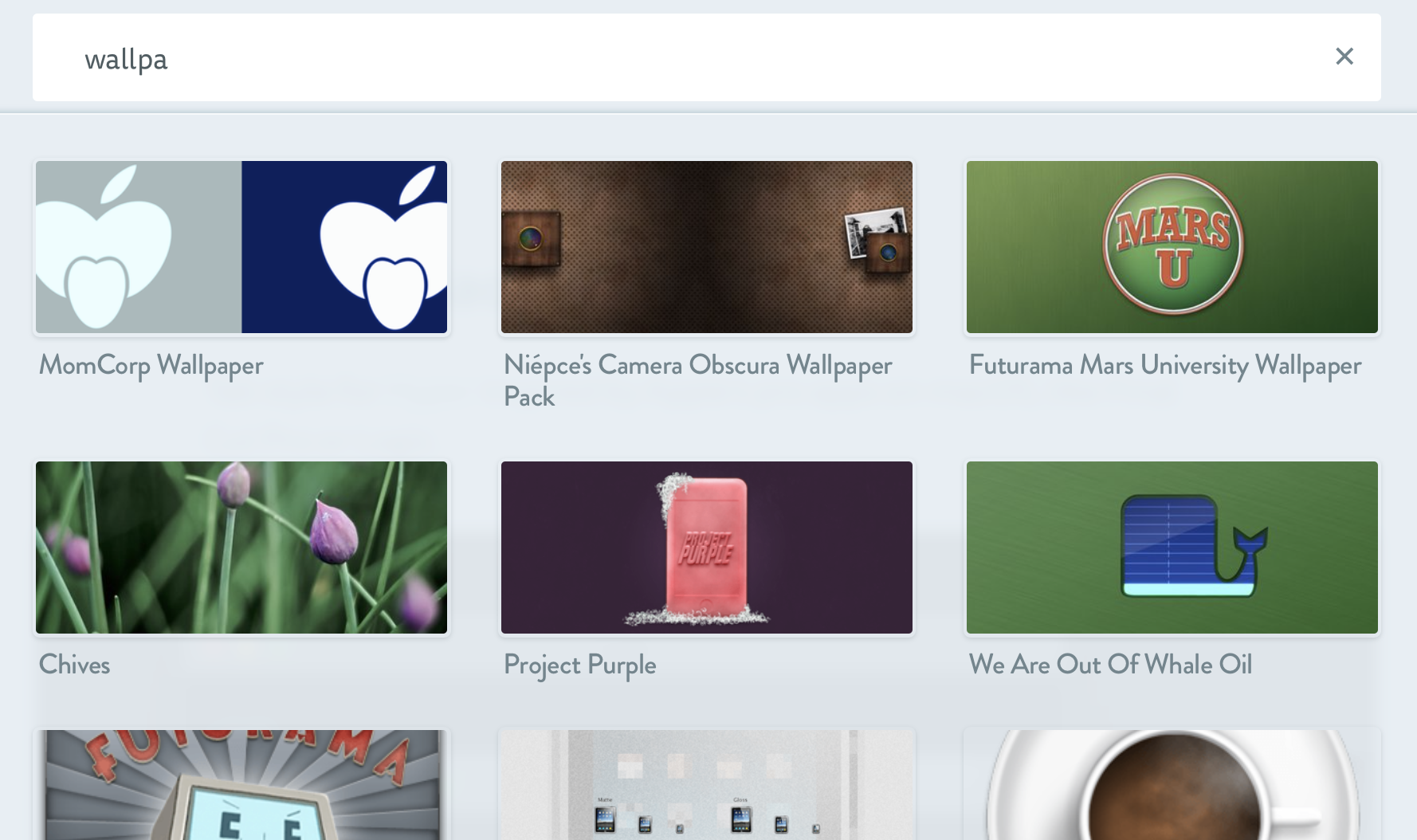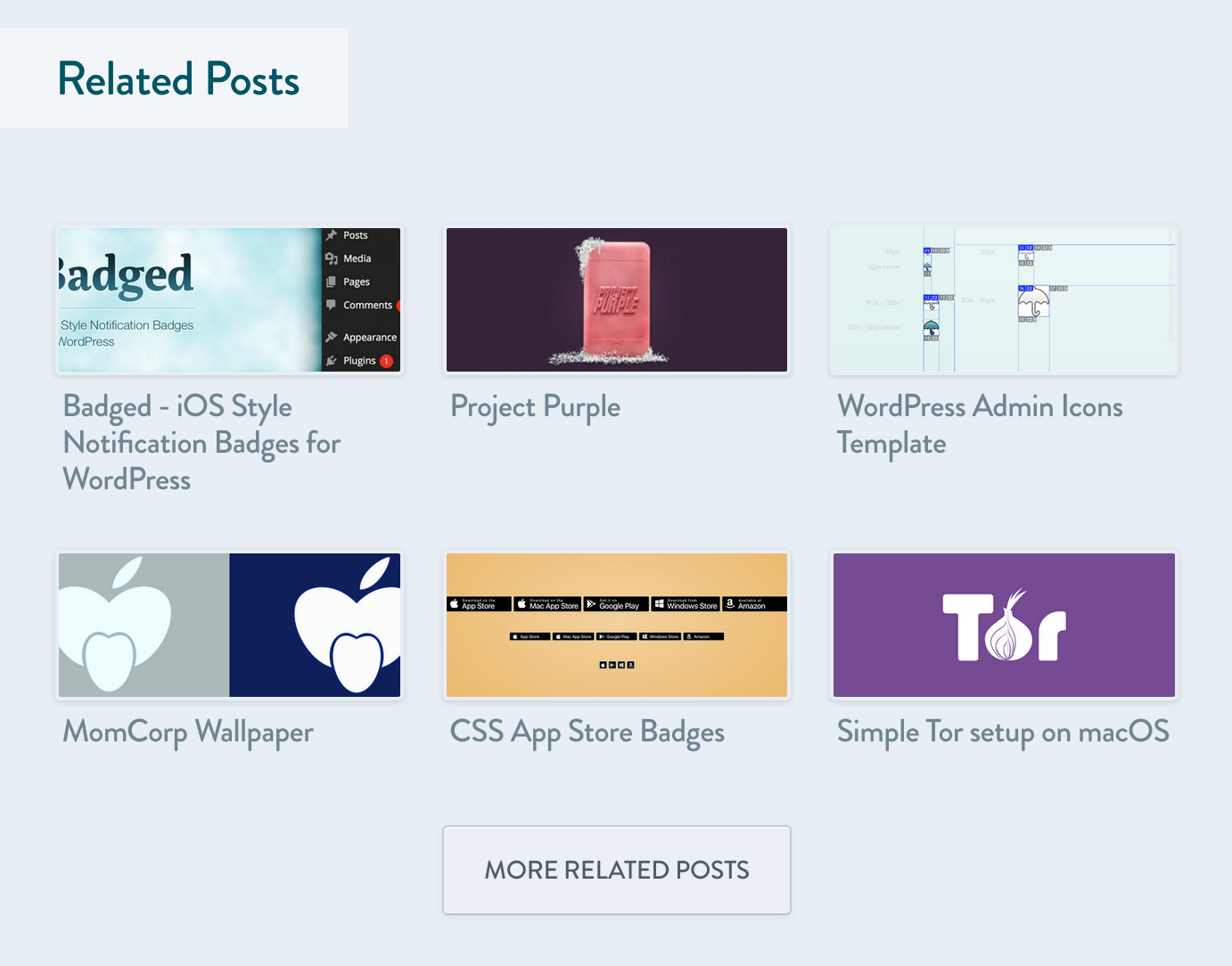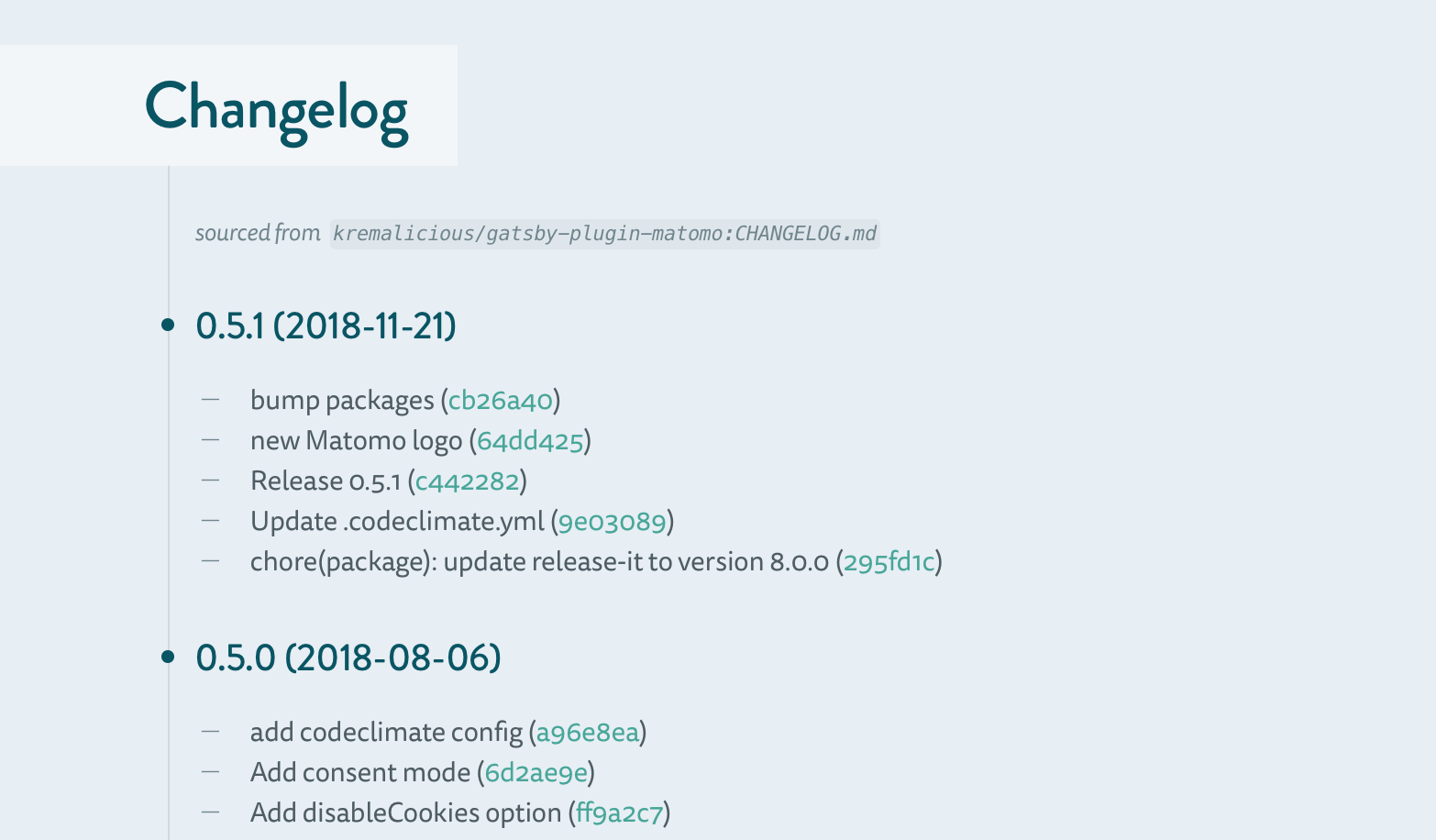
🍭 My blog built with Gatsby. Neat.
--- - [🎉 Features](#-features) - [🎆 EXIF extraction](#-exif-extraction) - [💰 Cryptocurrency donation via Web3/MetaMask](#-cryptocurrency-donation-via-web3metamask) - [🔍 Search](#-search) - [🕸 Related Posts](#-related-posts) - [📝 GitHub changelog rendering](#-github-changelog-rendering) - [🌗 Theme Switcher](#-theme-switcher) - [🏆 SEO component](#-seo-component) - [📈 Matomo (formerly Piwik) analytics tracking](#-matomo-formerly-piwik-analytics-tracking) - [gatsby-redirect-from](#gatsby-redirect-from) - [💎 Importing SVG assets](#-importing-svg-assets) - [🍬 Typekit component](#-typekit-component) - [✨ Development](#-development) - [🔮 Linting](#-linting) - [👩🔬 Testing](#-testing) - [🎈 Add a new post](#-add-a-new-post) - [🚚 Deployment](#-deployment) - [🏛 Licenses](#-licenses) - [Posts](#posts) - [Photos & images](#photos--images) --- ## 🎉 Features The whole [blog](https://kremalicious.com) is a React-based Single Page App built with [Gatsby v2](https://www.gatsbyjs.org). ### 🎆 EXIF extraction Automatically extracts EXIF & IPTC metadata from my photos on build time. For minimal overhead, [fast-exif](https://github.com/titarenko/fast-exif) & [node-iptc](https://github.com/derekbaron/node-iptc) parse every JPG file upon Gatsby file node creation and add the extracted data as node fields. This way, EXIF data is only extracted at build time and can be simply queried with GraphQL at run time. In the end looks like this, including location display with [pigeon-maps](https://github.com/mariusandra/pigeon-maps): If you want to know how this works, have a look at the respective component under
- [`src/components/atoms/Exif.jsx`](src/components/atoms/Exif.jsx)
- the EXIF node fields creation [`gatsby/createExif.js`](gatsby/createExif.js) running in [`gatsby-node.js`](gatsby-node.js)
### 💰 Cryptocurrency donation via Web3/MetaMask
Lets visitors say thanks with Bitcoin or Ether. Uses [web3.js](https://github.com/ethereum/web3.js) for sending Ether transactions via MetaMask, Brave or Mist. Component listens to account & network changes and adapts accordingly.
As a fallback, QR codes are generated with [react-qr-svg](https://github.com/no23reason/react-qr-svg) from the addresses defined in [`config.js`](config.js).
If you want to know how this works, have a look at the respective component under
- [`src/components/atoms/Exif.jsx`](src/components/atoms/Exif.jsx)
- the EXIF node fields creation [`gatsby/createExif.js`](gatsby/createExif.js) running in [`gatsby-node.js`](gatsby-node.js)
### 💰 Cryptocurrency donation via Web3/MetaMask
Lets visitors say thanks with Bitcoin or Ether. Uses [web3.js](https://github.com/ethereum/web3.js) for sending Ether transactions via MetaMask, Brave or Mist. Component listens to account & network changes and adapts accordingly.
As a fallback, QR codes are generated with [react-qr-svg](https://github.com/no23reason/react-qr-svg) from the addresses defined in [`config.js`](config.js).
 If you want to know how this works, have a look at the respective components under
- [`src/components/molecules/Web3Donation/index.jsx`](src/components/molecules/Web3Donation/index.jsx)
- [`src/components/molecules/Web3Donation/Account.jsx`](src/components/molecules/Web3Donation/Account.jsx)
- [`src/components/molecules/Web3Donation/InputGroup.jsx`](src/components/molecules/Web3Donation/InputGroup.jsx)
- [`src/components/molecules/Web3Donation/Conversion.jsx`](src/components/molecules/Web3Donation/Conversion.jsx)
- [`src/components/molecules/Web3Donation/Alerts.jsx`](src/components/molecules/Web3Donation/Alerts.jsx)
- [`src/components/molecules/Web3Donation/utils.jsx`](src/components/molecules/Web3Donation/utils.jsx)
- [`src/components/atoms/Qr.jsx`](src/components/atoms/Qr.jsx)
### 🔍 Search
A global search is provided with [gatsby-plugin-lunr](https://github.com/humanseelabs/gatsby-plugin-lunr). That plugin creates a [Lunr](https://lunrjs.com) search index file of all posts on build time which is then queried against when the search field is used.
If you want to know how this works, have a look at the respective components under
- [`src/components/molecules/Web3Donation/index.jsx`](src/components/molecules/Web3Donation/index.jsx)
- [`src/components/molecules/Web3Donation/Account.jsx`](src/components/molecules/Web3Donation/Account.jsx)
- [`src/components/molecules/Web3Donation/InputGroup.jsx`](src/components/molecules/Web3Donation/InputGroup.jsx)
- [`src/components/molecules/Web3Donation/Conversion.jsx`](src/components/molecules/Web3Donation/Conversion.jsx)
- [`src/components/molecules/Web3Donation/Alerts.jsx`](src/components/molecules/Web3Donation/Alerts.jsx)
- [`src/components/molecules/Web3Donation/utils.jsx`](src/components/molecules/Web3Donation/utils.jsx)
- [`src/components/atoms/Qr.jsx`](src/components/atoms/Qr.jsx)
### 🔍 Search
A global search is provided with [gatsby-plugin-lunr](https://github.com/humanseelabs/gatsby-plugin-lunr). That plugin creates a [Lunr](https://lunrjs.com) search index file of all posts on build time which is then queried against when the search field is used.
 If you want to know how this works, have a look at the respective components under
- [`src/components/molecules/Search/Search.jsx`](src/components/molecules/Search/Search.jsx)
- [`src/components/molecules/Search/SearchResults.jsx`](src/components/molecules/Search/SearchResults.jsx)
- more in [`src/components/molecules/Search/`](src/components/molecules/Search/)
### 🕸 Related Posts
Under each post a list of related posts is displayed which are based on the tags of the currently viewed post. Also allows loading more related posts in place.
If you want to know how this works, have a look at the respective components under
- [`src/components/molecules/Search/Search.jsx`](src/components/molecules/Search/Search.jsx)
- [`src/components/molecules/Search/SearchResults.jsx`](src/components/molecules/Search/SearchResults.jsx)
- more in [`src/components/molecules/Search/`](src/components/molecules/Search/)
### 🕸 Related Posts
Under each post a list of related posts is displayed which are based on the tags of the currently viewed post. Also allows loading more related posts in place.
 If you want to know how this works, have a look at the respective component under
- [`src/components/molecules/RelatedPosts.jsx`](src/components/molecules/RelatedPosts.jsx)
### 📝 GitHub changelog rendering
Adds ability to show contents of a changelog, rendered from a `CHANGELOG.md` on GitHub from the given repository. The use case is to enhance release posts about projects hosted on GitHub. Makes use of the GitHub GraphQL API via [gatsby-source-graphql](https://www.gatsbyjs.org/packages/gatsby-source-graphql/).
Adding this to a post's YAML frontmatter:
```yaml
changelog: gatsby-plugin-matomo
```
will render this at the end of the post:
If you want to know how this works, have a look at the respective component under
- [`src/components/molecules/RelatedPosts.jsx`](src/components/molecules/RelatedPosts.jsx)
### 📝 GitHub changelog rendering
Adds ability to show contents of a changelog, rendered from a `CHANGELOG.md` on GitHub from the given repository. The use case is to enhance release posts about projects hosted on GitHub. Makes use of the GitHub GraphQL API via [gatsby-source-graphql](https://www.gatsbyjs.org/packages/gatsby-source-graphql/).
Adding this to a post's YAML frontmatter:
```yaml
changelog: gatsby-plugin-matomo
```
will render this at the end of the post:
 See it live on [Matomo plugin for Gatsby](https://kremalicious.com/gatsby-plugin-matomo#changelog).
If you want to know how this works, have a look at the respective component under
- [`src/components/atoms/Changelog.jsx`](src/components/atoms/Changelog.jsx)
### 🌗 Theme Switcher
Includes a theme switcher which allows user to toggle between a light and a dark theme. Switching between them also happens automatically based on user's system preferences utilizing [use-dark-mode](https://github.com/donavon/use-dark-mode).
If you want to know how, have a look at the respective components:
- [`src/components/molecules/ThemeSwitch.jsx`](src/components/molecules/ThemeSwitch.jsx)
### 🏆 SEO component
Includes a SEO component which automatically switches all required `meta` tags for search engines, Twitter Cards, and Facebook OpenGraph tags based on the browsed route/page.
If you want to know how this works, have a look at the respective component under
- [`src/components/atoms/SEO.jsx`](src/components/atoms/SEO.jsx)
### 📈 Matomo (formerly Piwik) analytics tracking
Site sends usage statistics to my own [Matomo](https://matomo.org) installation. To make this work in Gatsby, I created and open sourced a plugin which is in use on this site.
- [gatsby-plugin-matomo](https://github.com/kremalicious/gatsby-plugin-matomo)
### gatsby-redirect-from
- [gatsby-redirect-from](https://github.com/kremalicious/gatsby-redirect-from)
### 💎 Importing SVG assets
All SVG assets under `src/images/` will be converted to React components with the help of [gatsby-plugin-svgr](https://github.com/zabute/gatsby-plugin-svgr). Makes use of [SVGR](https://github.com/smooth-code/svgr) so SVG assets can be imported like so:
```jsx
import { ReactComponent as Logo } from './components/svg/Logo'
;
See it live on [Matomo plugin for Gatsby](https://kremalicious.com/gatsby-plugin-matomo#changelog).
If you want to know how this works, have a look at the respective component under
- [`src/components/atoms/Changelog.jsx`](src/components/atoms/Changelog.jsx)
### 🌗 Theme Switcher
Includes a theme switcher which allows user to toggle between a light and a dark theme. Switching between them also happens automatically based on user's system preferences utilizing [use-dark-mode](https://github.com/donavon/use-dark-mode).
If you want to know how, have a look at the respective components:
- [`src/components/molecules/ThemeSwitch.jsx`](src/components/molecules/ThemeSwitch.jsx)
### 🏆 SEO component
Includes a SEO component which automatically switches all required `meta` tags for search engines, Twitter Cards, and Facebook OpenGraph tags based on the browsed route/page.
If you want to know how this works, have a look at the respective component under
- [`src/components/atoms/SEO.jsx`](src/components/atoms/SEO.jsx)
### 📈 Matomo (formerly Piwik) analytics tracking
Site sends usage statistics to my own [Matomo](https://matomo.org) installation. To make this work in Gatsby, I created and open sourced a plugin which is in use on this site.
- [gatsby-plugin-matomo](https://github.com/kremalicious/gatsby-plugin-matomo)
### gatsby-redirect-from
- [gatsby-redirect-from](https://github.com/kremalicious/gatsby-redirect-from)
### 💎 Importing SVG assets
All SVG assets under `src/images/` will be converted to React components with the help of [gatsby-plugin-svgr](https://github.com/zabute/gatsby-plugin-svgr). Makes use of [SVGR](https://github.com/smooth-code/svgr) so SVG assets can be imported like so:
```jsx
import { ReactComponent as Logo } from './components/svg/Logo'
;